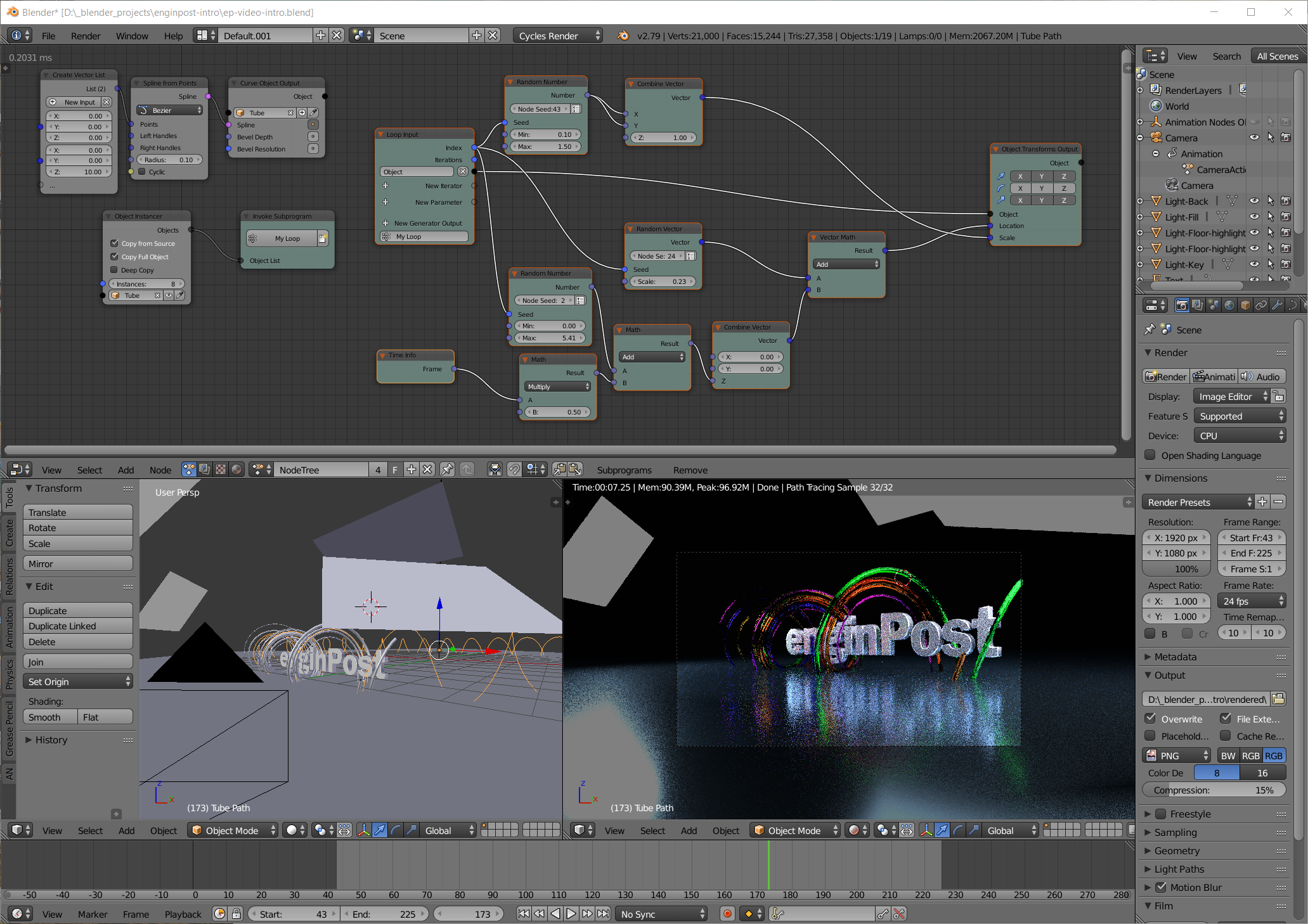

- #Blender 3d animation nodes how to animate force movie
- #Blender 3d animation nodes how to animate force free
Let's say you can also change the amount of iterations. So what does the screw modifier do? Well, if you go up in a Screw, you can see that now this vertex is being duplicated in a circular fashion. So here into modify properties at modifier and we're going to add a screw modifier. Now we have one vertex here, and we want to use a modifier on this. I like to add a plane and delete three of these vertices. And refers wants to delete the default cube. So let's actually start with a whole new blend. And yet we have this one background and that's it. This is a light in here, this cone I have here, here and here, and also lied, but I will go into that later. And then just it rotates and at the, Yeah, it's quite pleasing to the eyes. I literally just appended all of these tubes here to a empty and rotate this empty around. So if we look at the finished blender scene, you can see this. I thought it was very satisfying and yeah, you guys might want to learn it. Satisfying looping cone animation: Welcome, and you guys are going to learn how to create this scene. You can now move your camera closer to your character, set the keyframe, move it backward, and set it again. Click your camera and set up your keyframe. In the animation menu, set up your view side by side by side. To see where your camera is pointing, go to view > camera. Blender treats a camera as an object it can be moved, deleted, resized, or animated. Animate the plane so that it moves in and out of the scene. Change the material with the file included in this tutorial.
#Blender 3d animation nodes how to animate force free
Tip: If you need assistance on animating your character, feel free to check out my article on animating a character in our tutorials section. In this scene, I moved my character's head slightly and opened his mouth in the cue of the soundtrack we are going to use later in this tutorial. The more you space them out, the more seamless your animation will be. A great tip for animating is spacing out the keyframes appropriately.

Tip: Clicking A on the keyboard twice selects all. You can move your character in object mode by selecting all of his bones. Go to file > import and import your character into the scene. Time to import our character and add animation. You can tweak it in your settings, and you can also change the brightness and horizon lines.

Under the color, select open and open the. To add your HDR, click the world icon, and then add an environment texture. The makers of Blender Guru provide free HDR maps as well as tutorials on setting it up. They can bring sharp, vivid lighting to your scene. HDR maps can be pricey, but they are well worth it. HDR lighting can make your scenes look evenly bright and realistic. For the purpose of our scene, we are using 3 spotlight lamps for the curtain effect and HDR (High Dynamic Range) lighting for the scene. You may already know how to set up lamps, possibly a three-point lamp setup. If you have bad lighting, not only will the end result be dark, but images and objects won't render correctly. Lighting is one of the most important tools in your scene. We will need a wood texture for the stage and a red curtain texture for the curtains (attached). Now it's time to add the texture in the materials section of the Hierarchy. If you haven't done so, you will need to make sure you have images as planes enabled in the user settings. Rotate one plane to use it as a back wall. Let's start by going to add > plane from the menu on the bottom, and add another plane so that you have two planes in your viewport. Therefore, you will need a character rigged for animation, and you will also need to add two separate textures. For our sample scene, we are adding a stage using two planes and placing our character at the center of the stage. Once you have created your folders, it is time to open up Blender and prepare your environment. This would be a good time to create folders to help keep your project organized. Throughout your project, you will be using textures, backgrounds, and assets. Once you understand how to complete all the aspects of this scene, you will have the necessary tools to create your own scene in Blender. We will add animation, sound, and camera movement. In our scene, we will set up a stage, two curtains, and our character.

Finally, we will discuss how to render your scene and export it into a video format. We will discuss environments, lighting, animation, and text.
#Blender 3d animation nodes how to animate force movie
In this tutorial, you'll learn how to create an animated movie scene by scene in Blender. You can search for "Big Buck Bunny" and "Sintel" to see examples of the power of Blender. It's no wonder why many studios both small and large are using it to fully create their animated movies. Blender 3D is a versatile program with many great tools and resources.


 0 kommentar(er)
0 kommentar(er)
